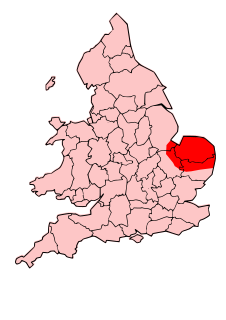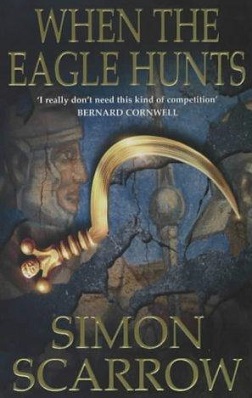
Boudica or Boudicca, also known as Boadicea or Boudicea, and in Welsh as Buddug, was a queen of the British Celtic Iceni tribe who led an uprising against the conquering forces of the Roman Empire in AD 60 or 61. According to Roman sources, shortly after the uprising failed, she poisoned herself or died of her wounds, although there is no actual evidence of her fate. She is considered a British folk hero.

The Celts are a collection of Indo-European peoples in parts of Europe and Anatolia identified by their use of the Celtic languages and other cultural similarities. Historic Celtic groups included the Gauls, Celtiberians, Gallaecians, Galatians, Britons, Gaels, and their offshoots. The relationship between ethnicity, language and culture in the Celtic world is unclear and controversial. In particular, there is dispute over the ways in which the Iron Age inhabitants of Britain and Ireland should be regarded as Celts.

Roman Britain is the period in classical antiquity when large parts of the island of Great Britain were under occupation by the Roman Empire. The occupation lasted from AD 43 to AD 410. During that time, the territory conquered was raised to the status of a Roman province.
AD 44 (XLIV) was a leap year starting on Wednesday of the Julian calendar. At the time, it was known as the Year of the Consulship of Crispus and Taurus. The denomination AD 44 for this year has been used since the early medieval period, when the Anno Domini calendar era became the prevalent method in Europe for naming years.
AD 61 (LXI) was a common year starting on Thursday of the Julian calendar. At the time, it was known as the Year of the Consulship of Turpilianus and Caesennius. The denomination AD 61 for this year has been used since the early medieval period, when the Anno Domini calendar era became the prevalent method in Europe for naming years.

The Roman conquest of Britain was a gradual process, beginning in AD 43 under Emperor Claudius and being largely completed by 87 when the Stanegate was established as the northern frontier.

The Iceni or Eceni were a Brittonic tribe of eastern Britain during the Iron Age and early Roman era. Their territory included present-day Norfolk and parts of Suffolk and Cambridgeshire, and bordered the area of the Corieltauvi to the west, and the Catuvellauni and Trinovantes to the south. In the Roman period, their capital was Venta Icenorum at modern-day Caistor St Edmund.
Prasutagus was king of a British Celtic tribe called the Iceni, who inhabited roughly what is now Norfolk, in the 1st century AD. He is best known as the husband of Boudica.

The decisive battle ending the Boudican Rebellion took place in Roman Britain in AD 60 or 61 between an alliance of British peoples led by Boudica and a Roman army led by Gaius Suetonius Paulinus. Although heavily outnumbered, the Romans decisively defeated the allied tribes, inflicting heavy losses on them. The battle marked the end of resistance to Roman rule in Britain in the southern half of the island, a period that lasted until 410 AD. Historians are dependent on Roman historians Tacitus and Dio Cassius for the only accounts of the battle.
The British Iron Age is a conventional name used in the archaeology of Great Britain, referring to the prehistoric and protohistoric phases of the Iron Age culture of the main island and the smaller islands, typically excluding prehistoric Ireland, which had an independent Iron Age culture of its own. The parallel phase of Irish archaeology is termed the Irish Iron Age. The Iron Age is not an archaeological horizon of common artefacts, but is rather a locally diverse cultural phase.

The Roman client kingdoms in Britain were native tribes which chose to align themselves with the Roman Empire because they saw it as the best option for self-preservation or for protection from other hostile tribes. Alternatively, the Romans created some client kingdoms when they felt influence without direct rule was desirable. Client kingdoms were ruled by client kings. In Latin these kings were referred to as ex sociusque et amicus, which translates to "king and ally and friend." The type of relationships between client kingdoms and Rome was reliant on the individual circumstances in each kingdom.

Norfolk is a rural county in the East of England. Knowledge of prehistoric Norfolk is limited by a lack of evidence — although the earliest finds are from the end of the Lower Paleolithic period. Communities have existed in Norfolk since the last Ice Age and tools, coins and hoards such as those found at Snettisham indicate the presence of an extensive and industrious population.

Venta Icenorum was the civitas or capital of the Iceni tribe, located at modern-day Caistor St Edmund in the English county of Norfolk. The Iceni inhabited the flatlands and marshes of that county and are famous for having revolted against Roman rule under their queen Boudica in the winter of AD 61.

When the Eagle Hunts is a 2002 novel by Simon Scarrow, set in 44 AD during the Roman invasion of Britain. It is the third book in the Eagles of the Empire series.
Events from the 1st century in Roman Britain.

Boudica is a British television film released in 2003. Starring Alex Kingston, Steven Waddington and Emily Blunt, in her film debut, the film is a biopic of the queen of the Iceni tribe, Boudica.

Boadicea and Her Daughters is a bronze sculptural group in London representing Boudica, queen of the Celtic Iceni tribe, who led an uprising in Roman Britain. It is located to the north side of the western end of Westminster Bridge, near Portcullis House and Westminster Pier, facing Big Ben and the Palace of Westminster across the road. It is considered the magnum opus of its sculptor, the English artist and engineer Thomas Thornycroft. Thornycroft worked on it from 1856 until shortly before his death in 1885, sometimes assisted by his son William Hamo Thornycroft, but it was not erected in its current position until 1902.

The Boudican revolt was an armed uprising by the native Celtic tribes against the Roman Empire. It took place c. 60-61 AD in the Roman province of Britain, and was led by Boudica, the Queen of the Iceni. The uprising was motivated by the Roman failure to honor an agreement they had made with her husband, Prasutagus, regarding the succession of his kingdom upon his death. The revolt ended unsuccessfully, after a decisive Roman victory at the Defeat of Boudica.













